Opinion & Analysis
Case #5589: The campaign for the longest driver in golf
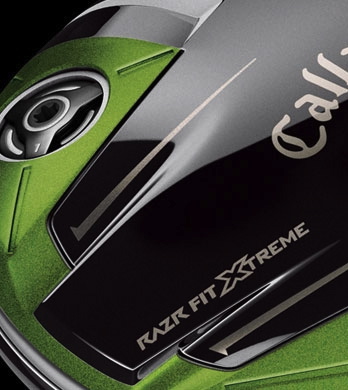
Mark Twain is often given credit for the assertion, “There are three kinds of lies: lies, damned lies and statistics.”
Were he still alive today, Twain would no doubt be intrigued by the current state of advertising and the golf industry in particular.
At its core, marketing is about procuring and sustaining customers. Customers create profit and profit is the lifeblood, which fuels all things pertinent to a private enterprise. And profit is gasoline to the engine, oxygen to the body and drama to Lindsay Lohan – it makes everything go.
So when someone or something interferes with your access to profit, you take it quite seriously. Especially when the challenge comes from a rival competitor and is the result of some rather shady statistics and shaky reasoning; or as I like to call it “lying.”
I know that lying and advertising are on some level synonymous, or more correctly that consumers understand on some level that what an ad presents as implicit truth is not an iron-clad promise to deliver the image presented. Advertising exists in the vast grey area between fiction and reality.
I understand that if I drink a certain beer, I won’t end up in a hot tub of busty blondes in some snow-capped rocky mountain retreat with 50 of my closest friends. I’m equally aware that a rugged 4X4 truck won’t increase my testosterone levels, nor will my wife and I ever end up on a beach, holding hands in two separate bathtubs watching the sunset, regardless of which pills I ingest.
But, when a company, in this case Callaway, claims to have “The Longest Driver in Golf,” then consumer should reasonably expect that the driver is in fact the longest.
[youtube id=”ihfRdZgG9CQ” width=”620″ height=”360″]
TaylorMade has dominated the metal woods portion of the golf industry for the last two decades, in much the same fashion as Titleist has owned golf ball usage and John Daly has had a monopoly on bad outfits. So when Callaway claimed to have “The Longest Driver in Golf,” TaylorMade didn’t take it well. When TaylorMade actually looked at how Callaway reached this conclusion, it called hogwash and filed a complaint with the NAD.
The NAD is a third-party wing of the Better Business Bureau that serves to resolve advertising complaints in a manner more expeditious (and significantly cheaper) than legal methods. According to the NAD, “an advertiser is responsible for all reasonable interpretations of its claims, not simply the messages it intended to convey.”
Enter case #5589: The skinny
TaylorMade objected to Callaway’s assertion of producing “The Longest Driver in Golf,” the #LongestDriverInGolf Twitter promotion and the usage of “The Longest Driver in Golf” phrase in eight out of nine advertising videos on the Callaway website.
Where the story really gets interesting is how exactly Callaway landed at this rather bold and audacious declaration. See, when testing the Razr Fit Xtreme driver, Callaway tested the 2013 RFX against five other models (all 2012 models) that represented 54 percent of the driver market according to “dollar market share” based on data from September 2012.
Problem: How can you claim to be the best of anything when you only test 54 percent of potential competitors? What if that 54 percent is inflated and the real number is more like 40 percent as the NAD reasonably suggested?
Also, both the Titleist 910 D2 and D3 were included in the 54 percent “figure,” but the D3 was left out of the player testing. Curious, right?
Callaway didn’t provide any rationale for this, which speaks volumes. Also, dollar market share doesn’t account for drivers that may have been purchased on sale (it was September after all) and creates a false assumption than the most expensive drivers are also the longest. Finally, TaylorMade objected to the use of extrapolating conclusive statements using data from a single month (although TaylorMade has done this exact tactic when it served its advertising needs…pot…kettle…you get the idea).
I don’t know that you need to test all 180-some-odd drivers that have appeared in the Golf Digest Hot List since 2004, but if you’re going to be the longest driver in golf in 2013, wouldn’t you want to test your product against other 2013 offerings?
Callaway also used a variety of test groups to test the five drivers against the Razr Fit Xtreme. The random sampling (one group had 13 testers, another eight and another 12) was indicative of either a group of fourth graders running a school science experiment or a company that never thought it would have to defend the validity of its claims. It gets better (or worse): 11 players tested only one driver, two players tested two drivers, eight players tested three drivers and only three players tested all five.
Problem: TaylorMade stated that it would have been more valid to treat each individual comparison of the RFX to one of the other models as an individual test. However, only 20 of the 58 would have shown the type of results Callaway desired and that’s hardly enough to be the “the longest driver in golf,” and probably not enough to even be the longest driver in your neighborhood.
Finally, Callaway didn’t actually fit the adjustable driver to ANY of the test participants, and it only used the 440 cubic centimeter head (which is only available in lower lofts and geared toward better players), failed to use any women as test participants and did I mention, all testers were CALLAWAY EMPLOYEES!
Problem: When your burden of proof is to test the “broadest range of player abilities possible,” it’s probably best to include both males and females and a wide-range of handicaps in your test pool. Looking at the handicaps of the Callaway employees/test subjects, 88 percent were 0-to-15 handicap and 77 percent were 0-to-10. When the average male handicap hovers in the mid-teens, this just doesn’t pass the smell test.
After considering all of the information presented, the NAD stated that Callaway didn’t provide sufficient evidence to declare the Razr Fit Xtreme “the longest driver in golf.” File that in the “duh” pile.
Callaway was disappointed and disagreed with the NAD decision (enter shocked face smiley emoticon here), but said that the company respected the decision and discontinued “The Longest Driver in Golf” campaign.
Translation: We’re really bummed we got caught, but hey, at least this product cycle is over and we can all move on.
Yet another layer to this smelly onion is case #5584, where Callaway asked the NAD to look into TaylorMade’s claims that “The average golfer picked up about 17 yards with the ROCKETBALLZ 3-Wood.”
It shouldn’t be lost on the reader that Callaway filed this complaint after receiving the complaint from TaylorMade regarding the RFX driver. It could be just interesting timing, and I could also be Hulk Hogan.
The NAD ultimately found no cause to ask TaylorMade to do anything more — TaylorMade had already deleted the content from an interview-style video with its CEO and added necessary qualifiers such as “better player”… compared to Burner ’11 fairway and 150 mph ball speed … total distance.”
What maybe gets lost in all of these qualifications is just how ridiculous it still is. In order to gain the supposed “17 yards,” you have to compare the 2012 RBZ fairway wood to the 2011 Burner fairway. OK, that’s simple enough. But now, you need to generate 150 mph of ball speed with a 3 wood. The average consumer is just going to gloss over that and make the unlikely assumption that 150 mph ball speed with a 3 wood is imminently doable. Let’s break that qualification down:
Looking at some PGA Tour stats, we see an average driver swing speed of 113 mph and a carry of 269 yards. This gives the player approximately 2.38 yards of carry for every mile per hour of swing speed. If we use a smash factor (ball speed/swing speed) of 1.47, we see that the average tour ball speed, with a driver, is approximately 166 mph.
To achieve a ball speed of 150 mph with a 3 wood (again, assuming a smash factor of 1.47, even though many amateur players will be closer to 1.4 or lower), a golfer would need a swing speed of approximately 102 mph, or just a couple miles per hour slower than an average PGA Tour player.
The average male driver swing speed is 80-to-85 mph, or some 30 mph slower than the average Tour player. If a 3 wood swing speed is a good 7 mph less than that, then the average player is generating approximately 110 mph of ball speed, or 40 mph less than the requisite amount to experience the “promised” 17 additional yards. At 2.38 yds carry/mph of swing speed, the average golfer is about 95 yards short of being able to realize the full Rocketballz potential.
Like Penny Lane quipped in Almost Famous: “It’s funny. The truth just sounds different.”
And generally, the truth just doesn’t sell as well. The individual consumer might be able to handle the truth, but I’m not sure the market could bear this reality. I don’t know about you, but if I only purchased items using objective, fact-based decisions, I’d probably have a lot less stuff. And if everyone did this, companies couldn’t survive. I’m hard pressed to come up with a solid list of people I know who will drop a couple hundred bucks for a couple yards, yet that is often the reality when an individual “upgrades” to the latest and greatest golf gear.
So instead, OEM’s propose the possible, the theoretical, and the consumer believes it to be the actual. The critical consumer knows that most PGA Tour players use drivers that are 45 inches or shorter, yet they continue to chase more distance with 45.5-inch and 46-inch drivers because they cranked one up on a launch monitor at some indoor big box store and couldn’t believe how far they hit it.
While Callaway and TaylorMade might be making the most noise (or crying) right now, these are hardly isolated incidents.
Some notable examples:
- The recent thread on GolfWRX documenting the industry practice of mis-stamping driver heads. As stated by Callaway, driver heads could be off by as much as 3 degrees. So your 8.5-degree driver could actually be closer to 11 degrees.
Click here to read the discussion about mis-stamped lofts in the forums.
Certainly, there are manufacturing tolerances in all industries, but essentially the OEM’s don’t trust the consumer to make an informed decision. Knowing that machismo and low-lofted drivers can go hand in hand, the OEM’s get the win-win. They sell a driver that fuels the male ego, yet probably fits the player a bit better. The player believes he is playing an 8.5-degree driver and no one is the wiser – that is until a golfer goes to get fit and can’t understand why he’s getting the best numbers from an 11.5-degree driver that is 2-degrees closed. If only he knew.
And lest we forget, it’s still lying. Boldface lying. My doctor doesn’t tell me the blood pressure he wants me to have, and at the end of my round, I sign for the score I shot, not the one I wanted to shoot. If OEM’s are willing to purposely stamp the wrong loft on a club, what else are they willing to do to “protect” us from our savage egos?
- TaylorMade’s current “My R1” campaign: Based on the commercials, any reasonable person would conclude that the driver played by the pros is the same club you can by at your local retail outlet. I mean, what else would you fathom when Dustin Johnson hands you “his R1?” What they don’t tell you is that NO ONE on Tour plays the version that is sold to the public.
Every OEM engages in advertising and marketing campaigns. Some are simply more aggressive than others. There are no fender-benders on the Autobahn, and when a company like TaylorMade or Callaway gets called out for crossing the line, there’s going to be some flames. But don’t you think the OEM’s know this? Aren’t some of these crashes calculated and already accounted for? Maybe they’re even expected.
Think about the recent case with Callaway. By the time the NAD investigated and rendered a decision, information was already leaking about Callaway’s next driver. So how much did the faulty campaign really cost Callaway? Pennies. It’s not like Callaway had to buy back a bunch of recalled products or really do much of anything, other than perhaps apologize and then focus on selling the living daylights out of whatever the next product is.
There might be a bit of public scrutiny, but likely nothing of lasting significance. The campaign was faulty from the onset and Callaway knew this, but the company leadership isn’t dumb. They knew exactly how shady their math was, but they also knew the odds were in its favor.
Nike just performed a similar act with the Roger Federer shoes at Wimbledon. The All England Club (ruling body for Wimbledon) requested, after a short 69-minute match that Federer no longer wear his white shoes with orange soles. See, Wimbledon has a strict “white apparel only” policy that is as much a part of the tradition as the Royal Family and grass courts. Nike offered these limited-edition shoes to the public for $140 and they sold out well before Federer ever took the court. So who won that match?
Who is to blame for this cluster? OEM’s? Retailers? Consumers? The Mayan Calendar? Just like there have to be buyers and sellers, everyone gets a little egg on their face with this debacle.
OEM’s
Ultimately, they produce the products and they have the final say in what lofts get stamped on clubs, what clubs are sold to the public and which are “tour only.” They create the ads and invest millions in marketing campaigns. Their money, their message, their profit. They can be as honest or dishonest as they feel necessary.
- Blame rating: Four stars
Retailers
As the outlets for the OEM’s, they absolutely have to move product. In fact, retailers probably have more pressure to move product than anyone. For them, it really is all about volume. How many of you have been the victim of a juiced-up launch monitor at a big box outlet? How often do we see threads detailing the latest barrage of bullarky from the $8-per-hour sales person? In this case, the consumer gets precisely the level of service and expertise they’re paying for.
- Blame rating: Three stars
Consumers
Actually, consumers have the most power in this conversation, yet the least information. No one has to buy anything, and the maxim about fools and money is far too often accurate.
- Blame rating: Two stars
The sooner golfers realize that OEM’s don’t care that much about helping golfers play better golf, the better off they will be. At the end of the day, a company’s bottom line is the bottom line. They don’t care who is buying their product, as long as someone is buying their product. They need profit, which means they need consumers who believe that whatever they are selling will fulfill some need they have.
I’m not suggesting that all OEM’s are evil villainous creatures that will stoop to any level just to make a buck, but if you are buying a ball, a club or a shaft only because of what a retailer or OEM is telling you, you’re playing right into their hands.
It’s like my uncle used to tell me. If you’ve been sitting at the poker table for 10 minutes and you can’t find the fool. Guess what? It’s you.
So, how long have you been sitting at the table?
- LIKE2
- LEGIT0
- WOW0
- LOL1
- IDHT0
- FLOP0
- OB0
- SHANK0
Opinion & Analysis
The Wedge Guy: What really makes a wedge work? Part 1

Of all the clubs in our bags, wedges are almost always the simplest in construction and, therefore, the easiest to analyze what might make one work differently from another if you know what to look for.
Wedges are a lot less mysterious than drivers, of course, as the major brands are working with a lot of “pixie dust” inside these modern marvels. That’s carrying over more to irons now, with so many new models featuring internal multi-material technologies, and almost all of them having a “badge” or insert in the back to allow more complex graphics while hiding the actual distribution of mass.
But when it comes to wedges, most on the market today are still single pieces of molded steel, either cast or forged into that shape. So, if you look closely at where the mass is distributed, it’s pretty clear how that wedge is going to perform.
To start, because of their wider soles, the majority of the mass of almost any wedge is along the bottom third of the clubhead. So, the best wedge shots are always those hit between the 2nd and 5th grooves so that more mass is directly behind that impact. Elite tour professionals practice incessantly to learn to do that consistently, wearing out a spot about the size of a penny right there. If impact moves higher than that, the face is dramatically thinner, so smash factor is compromised significantly, which reduces the overall distance the ball will fly.
Every one of us, tour players included, knows that maddening shot that we feel a bit high on the face and it doesn’t go anywhere, it’s not your fault.
If your wedges show a wear pattern the size of a silver dollar, and centered above the 3rd or 4th groove, you are not getting anywhere near the same performance from shot to shot. Robot testing proves impact even two to three grooves higher in the face can cause distance loss of up to 35 to 55 feet with modern ‘tour design’ wedges.
In addition, as impact moves above the center of mass, the golf club principle of gear effect causes the ball to fly higher with less spin. Think of modern drivers for a minute. The “holy grail” of driving is high launch and low spin, and the driver engineers are pulling out all stops to get the mass as low in the clubhead as possible to optimize this combination.
Where is all the mass in your wedges? Low. So, disregarding the higher lofts, wedges “want” to launch the ball high with low spin – exactly the opposite of what good wedge play requires penetrating ball flight with high spin.
While almost all major brand wedges have begun putting a tiny bit more thickness in the top portion of the clubhead, conventional and modern ‘tour design’ wedges perform pretty much like they always have. Elite players learn to hit those crisp, spinny penetrating wedge shots by spending lots of practice time learning to consistently make contact low in the face.
So, what about grooves and face texture?
Grooves on any club can only do so much, and no one has any material advantage here. The USGA tightly defines what we manufacturers can do with grooves and face texture, and modern manufacturing techniques allow all of us to push those limits ever closer. And we all do. End of story.
Then there’s the topic of bounce and grinds, the most complex and confusing part of the wedge formula. Many top brands offer a complex array of sole configurations, all of them admittedly specialized to a particular kind of lie or turf conditions, and/or a particular divot pattern.
But if you don’t play the same turf all the time, and make the same size divot on every swing, how would you ever figure this out?
The only way is to take any wedge you are considering and play it a few rounds, hitting all the shots you face and observing the results. There’s simply no other way.
So, hopefully this will inspire a lively conversation in our comments section, and I’ll chime in to answer any questions you might have.
And next week, I’ll dive into the rest of the wedge formula. Yes, shafts, grips and specifications are essential, too.
- LIKE19
- LEGIT6
- WOW1
- LOL1
- IDHT2
- FLOP2
- OB1
- SHANK1
Golf's Perfect Imperfections
Golf’s Perfect Imperfections: Amazing Session with Performance Coach Savannah Meyer-Clement

In this week’s episode, we spent some time with performance coach Savannah Meyer-Clement who provides many useful insights that you’ll be able to implement on the golf course.
- LIKE0
- LEGIT0
- WOW0
- LOL0
- IDHT0
- FLOP0
- OB0
- SHANK0
19th Hole
Vincenzi’s 2024 RBC Heritage betting preview: Patrick Cantlay ready to get back inside winner’s circle

Just a two-hour drive from Augusta National, the PGA TOUR heads to Harbour Town Golf Links in Hilton Head Island, S.C. Hilton Head Island is a golfer’s paradise and Harbour Town is one of the most beautiful and scenic courses on the PGA TOUR.
Harbour Town Golf Links is a par-71 that measures 7,121 yards and features Bermuda grass greens. A Pete Dye design, the course is heavily tree lined and features small greens and many dog legs, protecting it from “bomb-and-gauge” type golfers.
The field is loaded this week with 69 golfers with no cut. Last year was quite possibly the best field in RBC Heritage history and the event this week is yet another designated event, meaning there is a $20 million prize pool.
Most of the big names on the PGA Tour will be in attendance this week with the exceptions of Hideki Matsuyama and Viktor Hovland. Additionally, Webb Simpson, Shane Lowry, Gary Woodland and Kevin Kisner have been granted sponsors exemptions.
Past Winners at Harbour Town
- 2023: Matt Fitzpatrick (-17)
- 2022: Jordan Spieth (-13)
- 2021: Stewart Cink (-19)
- 2020: Webb Simpson (-22)
- 2019: CT Pan (-12)
- 2018: Sotoshi Kodaira (-12)
- 2017: Wesley Bryan (-13)
- 2016: Branden Grace (-9)
- 2015: Jim Furyk (-18)
In this article and going forward, I’ll be using the Rabbit Hole by Betsperts Golf data engine to develop my custom model. If you want to build your own model or check out all of the detailed stats, you can sign up using promo code: MATTVIN for 25% off any subscription package (yearly is best value).
Key Stats For Harbour Town
Let’s take a look at key metrics for Harbour Town Golf Links to determine which golfers boast top marks in each category over their past 24 rounds.
Strokes Gained: Approach
Strokes Gained: Approach is exceedingly important this week. The greens at Harbour Town are about half the size of PGA TOUR average and feature the second-smallest greens on the tour. Typical of a Pete Dye design, golfers will pay the price for missed greens.
Total SG: Approach Over Past 24 Rounds
- Scottie Scheffler (+1.27)
- Tom Hoge (+1.27)
- Corey Conners (+1.16)
- Austin Eckroat (+0.95)
- Cameron Young (+0.93)
Good Drive %
The fairways at Harbour Town are tree lined and feature many dog legs. Bombers tend to struggle at the course because it forces layups and doesn’t allow long drivers to overpower it. Accuracy is far more important than power.
Good Drive % Over Past 24 Rounds
- Brice Garnett (88.8%)
- Shane Lowry (+87.2%)
- Akshay Bhatia (+86.0%)
- Si Woo Kim (+85.8%)
- Sepp Straka (+85.1%)
Strokes Gained: Total at Pete Dye Designs
Pete Dye specialists tend to play very well at Harbour Town. Si Woo Kim, Matt Kuchar, Jim Furyk and Webb Simpson are all Pete Dye specialists who have had great success here. It is likely we see some more specialists near the top of the leaderboard this week.
SG: TOT Pete Dye per round over past 36 rounds:
- Xander Schauffele (+2.27)
- Scottie Scheffler (+2.24)
- Ludvig Aberg (+2.11)
- Brian Harman (+1.89)
- Sungjae Im (+1.58)
4. Strokes Gained: Short Game (Bermuda)
Strokes Gained: Short Game factors in both around the green and putting. With many green-side bunkers and tricky green complexes, both statistics will be important. Past winners — such as Jim Furyk, Wes Bryan and Webb Simpson — highlight how crucial the short game skill set is around Harbour Town.
SG: SG Over Past 24 Rounds
- Jordan Spieth (+1.11)
- Taylor Moore (+1.02)
- Wyndham Clark (+0.98)
- Mackenzie Hughes (+0.86)
- Andrew Putnam (+0.83)
5. Greens in Regulation %
The recipe for success at Harbour Town Golf Links is hitting fairways and greens. Missing either will prove to be consequential — golfers must be in total control of the ball to win.
Greens in Regulation % over past 24 rounds:
- Brice Garnett (+75.0%)
- Scottie Scheffler (+69.9%)
- Corey Conners (+69.0%)
- Shane Lowry (+68.3%)
- Patrick Rodgers (+67.6%)
6. Course History
Harbour Town is a course where players who have strong past results at the course always tend to pop up.
Course History over past 24 rounds:
- Patrick Cantlay (+2.34)
- Cam Davis (+2.05)
- J.T. Poston (+1.69)
- Justin Rose (+1.68)
- Tommy Fleetwood (+1.59)
The RBC Heritage Model Rankings
Below, I’ve compiled overall model rankings using a combination of the five key statistical categories previously discussed — SG: Approach (24%), Good Drives (20%), SG: SG (14%), SG: Pete Dye (14%), GIR (14%), and Course History (14%)
- Shane Lowry
- Russell Henley
- Scottie Scheffler
- Xander Schauffele
- Corey Conners
- Wyndham Clark
- Christiaan Bezuidenhout
- Matt Fitzpatrick
- Cameron Young
- Ludvig Aberg
2024 RBC Heritage Picks
Patrick Cantlay +2000 (FanDuel)
With the exception of Scottie Scheffler, the PGA Tour has yet to have any of their star players show peak form during the 2024 season. Last week, Patrick Cantlay, who I believe is a top-5 players on the PGA Tour, took one step closer to regaining the form that’s helped him win eight events on Tour since 2017.
Cantlay limped into the Masters in poor form, but figured it out at Augusta National, finishing in a tie for 20th and ranking 17th for the week in Strokes Gained: Ball Striking. The former FedEx Cup champion will now head to one of his favorite golf courses in Harbour Town, where he’s had immaculate results over the years. In his six trips to the course, he’s only finished worse than 7th one time. The other finishes include three third places (2017, 2019, 2023) and one runner-up finish (2022). In his past 36 rounds at Harbour Town, Cantlay ranks 1st in Strokes Gained: Total per round at the course by a wide margin (+2.36).
Cantlay is winless since the 2022 BMW Championship, which is far too long for a player of his caliber. With signs pointing to the 32-year-old returning to form, a “signature event” at Harbour Town is just what he needs to get back on the winning track.
Tommy Fleetwood +3000 (FanDuel)
I truly believe Tommy Fleetwood will figure out a way to win on American soil in 2024. It’s certainly been a bugaboo for him throughout his career, but he is simply too talented to go another season without winning a PGA Tour event.
At last week’s Masters Tournament, Fleetwood made a Sunday charge and ended up finishing T3 in the event, which was his best ever finish at The Masters. For the week, the Englishman ranked 8th in the field in Strokes Gained: Approach, 10th in Strokes Gained: Ball Striking and 16th in Strokes Gained: Putting.
Harbour Town is a perfect layout for Fleetwood, and he’s had relative success at this Pete Dye design in the past. In his four trips to the course, he’s finished inside of the top 25 three times, with his best finish, T10, coming in 2022. The course is pretty short and can’t be overpowered, which gives an advantage to more accurate players such as Fleetwood. Tommy ranks 8th in the field in Good Drive % and should be able to plot his way along this golf course.
The win is coming for Tommy lad. I believe there’s a chance this treasure of a golf course may be the perfect one for him to finally break through on Tour.
Cameron Young +3300 (FanDuel)
Cameron Young had a solid Masters Tournament last week, which is exactly what I’m looking for in players who I anticipate playing well this week at the RBC Heritage. He finished in a tie for 9th, but never felt the pressure of contending in the event. For the week, Young ranked 6th in Strokes Gained: Off the Tee and 6th in Strokes Gained: Ball Striking.
Despite being one of the longest players off the tee on the PGA Tour, Young has actually played some really good golf on shorter tracks. He finished T3 at Harbour Town in 2023 and ranks 20th in the field in Good Drive% and 16th in Greens in Regulation in his past 24 rounds. He also has strong finishes at other shorter courses that can take driver out of a players hand such as Copperhead and PGA National.
Young is simply one of the best players on the PGA Tour in 2024, and I strongly believe has what it takes to win a PGA Tour event in the very near future.
Corey Conners +5500 (FanDuel)
Corey Conners has had a disappointing year thus far on the PGA Tour, but absolutely loves Harbour Town.
At last week’s Masters Tournament, the Canadian finished T30 but ranked 20th in the field in Strokes Gained: Approach. In his past 24 rounds, Conners ranks 3rd in the field in Strokes Gained: Approach, 3rd in Greens in Regulation % and 24th in Good Drive %.
In Conners’ last four trips to Harbour Town, his worst finish was T31, last season. He finished T4 in 2021, T12 in 2022 and ranks 8th in Strokes Gained: Total at the course over his past 36 rounds.
Conners hasn’t been contending, but his recent finishes have been encouraging as he has finished in the top-25 in each of his past three starts prior to The Masters, including an impressive T13 at The PLAYERS. His recent improvement in ball striking as well as his suitability for Harbour Town makes Conners a high upside bet this week.
Shane Lowry (+7500) (FanDuel)
When these odds were posted after Lowry was announced in the field, I have to admit I was pretty stunned. Despite not offering much win equity on the PGA Tour over the last handful of years, Shane Lowry is still a top caliber player who has the ability to rise to the top of a signature event.
Lowry struggled to score at The Masters last week, but he actually hit the ball really well. The Irishman ranked 1st for Strokes Gained: Approach on the week and 7th in Strokes Gained: Ball Striking. As usual, it was the putter that let him down, as he ranked 60th in the field in Strokes Gained: Putting.
Harbour Town is most definitely one of Lowry’s favorite courses on the PGA Tour. In his six starts there, he’s finished in the top 10 three times, including third twice. Lowry is sensational at Pete Dye designs and ranks 7th in Strokes Gained: Total in his past 36 rounds on Dye tracks.
Lowry is perfect for Harbour Town. In his past 24 rounds, he ranks 5th in Strokes Gained: Approach, 2nd in Good Drive% and 5th in Green in Regulation %. If he figures it out on the greens, Shane could have his first win in America since 2015.
Lucas Glover +12000 (FanDuel)
This is one of my weekly “bet the number” plays as I strongly believe the odds are just too long for a player of Glover’s caliber. The odds have been too long on Glover for a few weeks now, but this is the first event that I can get behind the veteran being able to actually contend at.
Glover is quietly playing good golf and returning to the form he had after the understandable regression after his two massive victories at the end of 2023. He finished T20 at The Masters, which was his best ever finish at Augusta National. For the week, Lucas ranked 18th for Strokes Gained: Approach and 20th in Strokes Gained: Ball Striking.
Over his past 24 rounds, Glover ranks 9th in Strokes Gained: Approach and 13th in Good Drive %. Harbour Town is a short course that the 44-year-old will be able to keep up with the top players on Tour off the tee. He’s played the course more than 20 times, with mixed results. His best finishes at Harbour Town include a T7 in 2008, but recently has a finish of T21 in 2020.
Glover has proven he can contend with the stars of the Tour on any given week, and this number is flat out disrespectful.
- LIKE30
- LEGIT5
- WOW2
- LOL1
- IDHT1
- FLOP2
- OB0
- SHANK2
-

 19th Hole1 week ago
19th Hole1 week agoDave Portnoy places monstrous outright bet for the 2024 Masters
-

 19th Hole3 weeks ago
19th Hole3 weeks agoThings got heated at the Houston Open between Tony Finau and Alejandro Tosti. Here’s why
-

 19th Hole1 week ago
19th Hole1 week agoTiger Woods arrives at 2024 Masters equipped with a putter that may surprise you
-

 19th Hole2 weeks ago
19th Hole2 weeks agoReport: Tiger Woods has ‘eliminated sex’ in preparation for the 2024 Masters
-

 19th Hole5 days ago
19th Hole5 days agoTwo star names reportedly blanked Jon Rahm all week at the Masters
-

 19th Hole4 days ago
19th Hole4 days agoNeal Shipley presser ends in awkward fashion after reporter claims Tiger handed him note on 8th fairway
-

 19th Hole3 days ago
19th Hole3 days agoReport: LIV Golf identifies latest star name they hope to sign to breakaway tour
-

 19th Hole2 weeks ago
19th Hole2 weeks agoAddiction, spinal fusion, and scam artists – Everything Anthony Kim revealed in candid interview with David Feherty

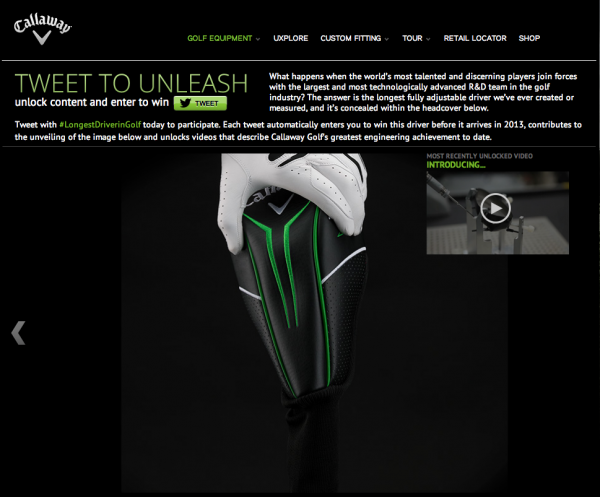
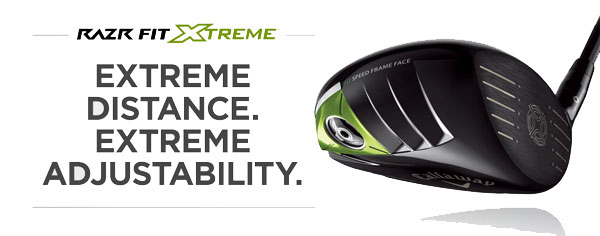






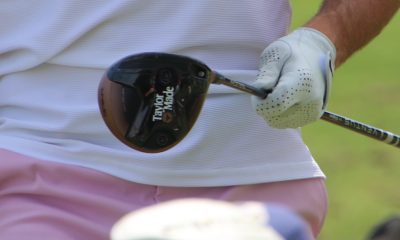



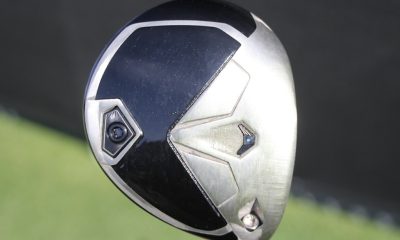

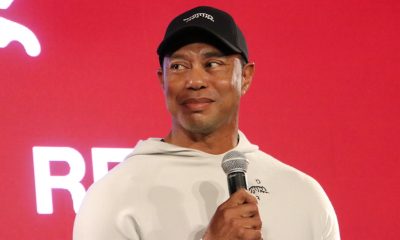

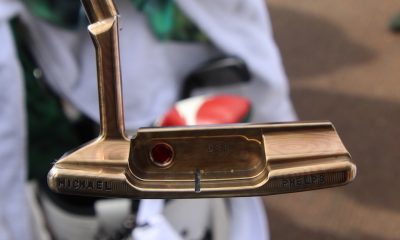













Bill
Jul 13, 2013 at 2:12 pm
But, but , but….the Razr Fit Xtreme IS the longest driver I’ve ever hit. Stock shaft and all. Tremendously longer than my previous gamer.
Exaggerating in advertising is a time honored tradition in golf. “You’ll play better” doesn’t sound nearly as exciting as “Longest Driver in Golf” to an ad man. So guess what WE get to read?
Common sense here. If you are a good golfer and are considering a club then get to a demo day and hit it alongside your current gamer and then hit the top of the line competition. I read all the web sites and golf mags too. But I take everything in print with a grain of salt.
Clubs that are universally raved about often don’t work for me. Same with balls. We all like tweaking our game a step at a time with better technology. It’s part of the fun. Not every car is the best and most advanced. Not every new bill being voted into passage is what’s best for its constituents. Why would I think golf evaluations would be any different? But I was looking at Scotty Cameron’s top line putters for $3000-$4500 and they MUST be amazing, right?
R
Jul 12, 2013 at 10:38 pm
Fantastic article.
pine
Jul 3, 2013 at 12:06 pm
Then where do I look to for honest recommendations for buying my next club/s???
RCM1301
Jul 3, 2013 at 1:59 pm
GolfWRX. Read user forums, not what Golf Digest or that guy at Dick’s says.
FatRick
Jul 1, 2013 at 10:19 am
I don’t seem how you can blame the consumer less than the OEMs or retailers. Your job as a consumer is to cut through all the BS, which really is not hard to do in golf since you can actually test out the products before you by them. You don’t do that and end up with something that doesn’t fit you, thats on you and only you.
digsnola
Jul 2, 2013 at 11:23 am
While I agree that consumers should try to educate themselves before buying any product, the golf OEMs have for so long purposely perpetuated these lies and aggressive tactics that most of the golfing public take it as truth. Callaway says they’re the longest most forgiving ever nearly every year. TM states yardage gains each year that would have us driving the ball 450 yards compared to our 2000 driver.
While golf is only a game, it was a game that many on this forum were drawn to because of its difficulty and integrity. Questionable advertising and mis-stamping of loft flies in the face of these precepts. This is why I’m bothered. It’s slimey gamesmanship in a game of honor.
To ask the consumer to either look behind the veil and be cool with it, or don’t look in the first place but still fork over 500 bucks or more, is insulting. The golf industry is eating its young.
J C
Jul 1, 2013 at 1:32 am
I HAVE THE LONGEST DRIVER IN GOLF, IT’S SHAFT IS 48 INCHES.
Double Mocha Man
Jun 30, 2013 at 9:38 pm
I have the longest driver in golf.
I read all the hype, didn’t believe it. Tried it twice over the course of two different demo days. Bought it.
Set out to play all my favorite courses from my usual tees. Gained 15 to 20 yards with no swing changes. It’s the only driver I’ve ever bought that was true to its word.
I’ve had it almost 3 years and constantly compare it to other brands at different demo days. This driver is still in my bag.
naflack
Jun 30, 2013 at 7:21 pm
very informative, not very surprising information.
another validation for my mute button usage during the golf coverage commercials.
Jason
Jun 30, 2013 at 10:28 am
Mellow out bro……it’s just golf. I don’t understand why people get worked into a lather about things like this. What I really don’t get is why people care so much about getting tour issue TaylorMade equipment. So your R1 isn’t the same as Dustin Johnson’s…..who cares? 99.9% of the world wouldn’t benefit from his driver. But good news! You can buy tour issue equipment from some dude on the Internet and guess what, he can fit you for a shaft also!!!! All over the phone!!!! For $1500.00 you can have Dustin Johnson’s driver! You obviously only watch golf commercials on tv, but guess what there are many other industries which bend the truth in their commercials.
Chris b
Jun 30, 2013 at 7:26 am
Hands down one of the most informative golf articles I’ve ever written. Neatly and accurately sums up a lot of the informative threads floating around, every golfer should read this. This article is WHAT WRX is about. Hats off to Mr Nickel
Chris b
Jun 30, 2013 at 7:27 am
Should have said “read” not written
Edward Brumby
Jun 30, 2013 at 6:39 am
While your have written an excellent article that makes many good points, if we are going to be assigning blame isn’t it fair to look also to the major golf magazines. Both test a lot of product, but they disguise the results of their testing with vague phrases rather than raw numbers or a more exact ranking. Plus Golf Digest includes expected demand as a criteria for giving out their “Gold” award. This means a better performing club from a small manufacturer may be ranked below a club from a big manufacturer. Isn’t this just a reward for advertising? So I give the golf magazines three stars in the blame game.
chris
Jul 2, 2013 at 9:52 pm
Right on the button edward
downtoo
Jul 3, 2013 at 12:36 pm
Great article, thanks for taking the time to go into such detail. Basic marketing teaches companies to sell the sizzle not the steak. Shame on us as consumers for falling prey to OEMs and their age old ruse.
Ken
Jul 11, 2013 at 5:08 pm
I have been an on and off golfer for 50 years. I have been a fanatical skier for 35 of those 50 years. Both are sports that use equipment where the pro version is radically different than the public version. The way to hold OEM’s feet to the fire is to develop hard core measurement methods and publishing the results. Defined parameters would not be as pretty but they sure would be a lot more informative.
Example: Take golf shafts and measure the deflection and rebound with actual weights. Measure how much the shaft bends and publish the information. Soft shafts will bend more than stiff shafts. Use the swing robot to measure how far the golf club hits the golf ball. Use different golf balls with a single golf club to measure how far golf balls go. Use tests that can be verified over and over again. Will there be unaccountable differences in some cases? Absolutely becuase there are different quality control issues.
Lets get out of the imagination world and get into the reality world.